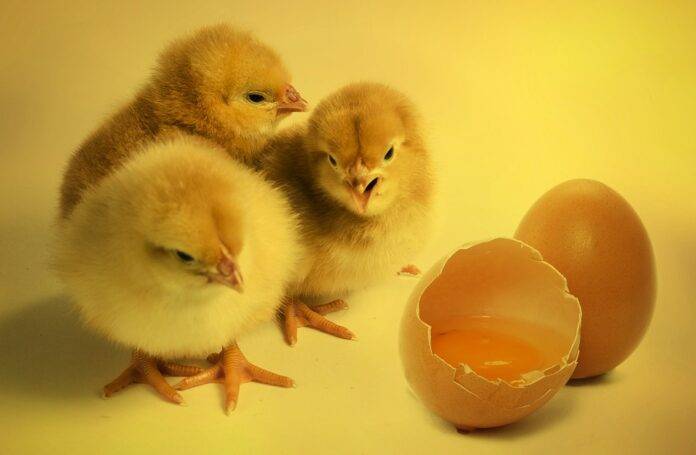Introduction
Poultry farming is a critical component of the global agricultural landscape, providing a significant source of protein for billions of people worldwide. As demand for poultry products continues to rise, countries with advanced poultry farming infrastructure are better positioned to meet this need efficiently. This report examines the top 10 countries with the most advanced poultry farming infrastructure, highlighting their technological advancements, financial investments, volumes of production, and overall impact on the global market.
1. United States
The United States is a leader in poultry production, accounting for approximately 20% of the world’s chicken supply. In 2022, the U.S. poultry industry generated over $50 billion in revenue, with more than 9 billion broilers processed annually. The country boasts advanced farming technologies, such as automated feeding systems, climate-controlled housing, and biosecurity measures that ensure high-quality production. Major companies like Tyson Foods and Pilgrim’s Pride dominate the market, with significant investments in research and development to improve efficiency and sustainability.
Technological Innovations
The U.S. poultry sector is at the forefront of technological innovation, incorporating artificial intelligence (AI) for monitoring flock health and optimizing feed conversion ratios. These advancements have led to a 20% increase in production efficiency over the past decade.
2. Brazil
Brazil is the second-largest poultry producer globally, with chicken production reaching approximately 14 million metric tons in 2022. The industry is valued at over $30 billion, with exports accounting for more than 40% of production. Brazil’s poultry farms are known for their integration of modern breeding techniques and robust biosecurity measures, which have significantly reduced disease outbreaks.
Export Market
Brazil’s poultry exports are vital to its economy, with key markets in the Middle East and Asia. In 2021, Brazil exported 4.2 million tons of chicken, making it the largest exporter in the world.
3. China
China ranks third in poultry production, producing over 13 million metric tons of chicken in 2022. The industry is rapidly modernizing, driven by increasing domestic demand and government support for infrastructure development. China’s poultry farming infrastructure includes large-scale farms equipped with state-of-the-art technology.
Government Initiatives
The Chinese government has invested heavily in poultry infrastructure, with plans to modernize the industry by 2025. This includes the development of biosecure farms and improvement of supply chain logistics.
4. India
India’s poultry industry is booming, with production reaching 4 million metric tons annually, valued at approximately $30 billion. The country has seen a shift from traditional farming practices to more advanced production systems, focusing on biosecurity, nutrition, and disease management.
Growth Potential
India’s poultry market is expected to grow at a CAGR of 8% from 2022 to 2027. The increasing urbanization and rising incomes are driving demand for poultry products, making India a significant player in the global poultry market.
5. Russia
Russia is among the top poultry producers, with production volumes exceeding 4 million metric tons in 2022. The Russian government has prioritized self-sufficiency in poultry production, leading to significant investments in domestic farming infrastructure.
Subsidies and Support
The Russian poultry industry benefits from government subsidies aimed at increasing production capacity and improving farming practices. These initiatives have made Russia one of the leading poultry producers in Eastern Europe.
6. Mexico
Mexico’s poultry industry is valued at around $15 billion, with chicken production reaching approximately 3 million metric tons in 2022. The country employs modern farming techniques, including controlled environment housing and advanced feed formulations.
Market Dynamics
Mexico’s poultry market is characterized by a mix of large-scale operations and smallholder farms. The industry is supported by strong domestic consumption and increasing export opportunities in North America.
7. Indonesia
Indonesia has emerged as a significant player in the poultry sector, with production levels hitting 3 million metric tons in 2022. The industry is characterized by a combination of traditional and modern farming practices, with a growing focus on biosecurity.
Local Consumption
With a population exceeding 270 million, Indonesia is one of the largest consumers of poultry in Southeast Asia. The government is actively promoting the use of modern farming techniques to enhance productivity and food safety.
8. Japan
Japan’s poultry industry is relatively smaller, with production at around 1.5 million metric tons annually, valued at approximately $10 billion. However, the country is known for its high standards of quality and food safety, employing advanced technology in poultry farming.
Quality Control
Japan’s poultry sector emphasizes quality control, with strict regulations governing production. The use of advanced breeding techniques and feed formulation contributes to the high-quality poultry products available in the market.
9. Thailand
Thailand is a major poultry producer in Asia, with production levels around 3 million metric tons in 2022. The industry has seen significant investment in biosecurity and automation, leading to enhanced productivity.
Export Opportunities
Thailand’s poultry exports, primarily to Japan and Europe, have grown considerably, with the country being recognized for its high-quality products. The Thai government continues to support the industry through various initiatives aimed at improving production practices.
10. European Union
The European Union, as a collective, represents a major poultry production hub, with total production exceeding 12 million metric tons in 2022. Countries like France, Germany, and Spain lead in production, employing advanced farming technologies and strict welfare standards.
Sustainability Practices
The EU poultry industry is increasingly focused on sustainability, with initiatives aimed at reducing carbon footprints and improving animal welfare. The integration of organic farming practices and the promotion of free-range poultry are gaining traction.
Conclusion
The landscape of poultry farming is evolving, with advancements in technology, sustainable practices, and government support driving growth in key countries. The top 10 countries highlighted in this report exemplify the potential of advanced poultry farming infrastructure to meet global protein demands efficiently. As the industry continues to innovate, these nations will play a critical role in shaping the future of poultry production.
[Read More: Global Poultry Industry Report 2025: Trends, Challenges, and Future Outlook Across the Value Chain]




